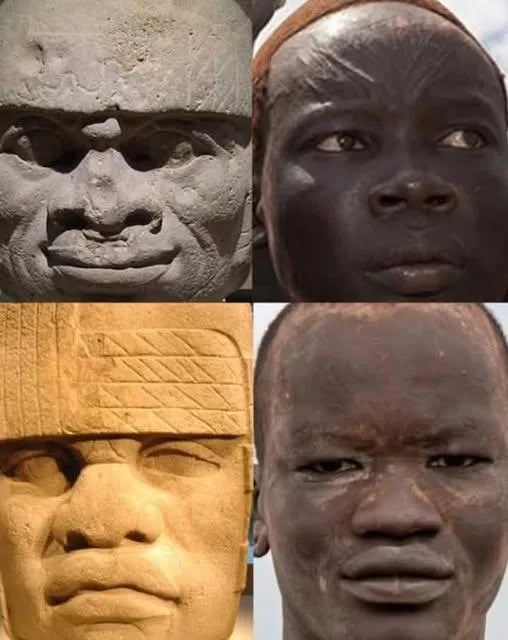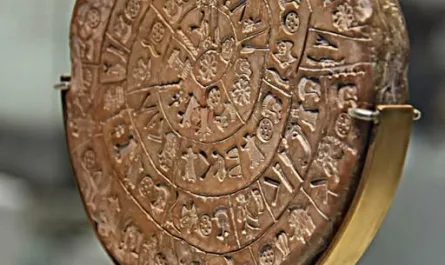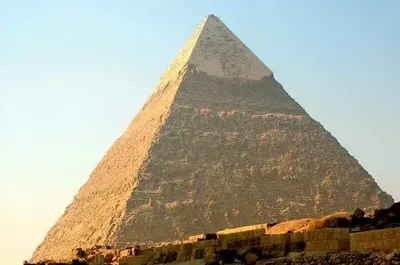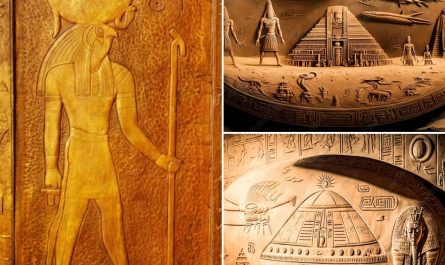Deep in the lush jungles of Mexico’s Gulf Coast, the ancient Olmec civilization (1400–400 BC) left behind a legacy that continues to captivate and mystify. Known as the “Mother Culture” of Mesoamerica, the Olmecs built towering pyramids, crafted intricate jade artifacts, and developed a sophisticated calendar system. Yet, their sudden emergence and advanced culture have sparked a provocative theory: could the Olmecs have African origins, bringing advanced practices to the Americas millennia before Columbus?

The Case for African Origins
Proponents of the African origin theory, notably scholar Ivan Van Sertima, point to striking evidence:
-
Colossal Stone Heads: The Olmecs’ most iconic creations are the massive basalt heads found at sites like San Lorenzo and La Venta. Weighing up to 50 tons, these sculptures depict individuals with broad noses and full lips—features some interpret as distinctly African. Could these be portraits of African voyagers or rulers?
-
Cultural Parallels: Researchers have noted similarities between Olmec practices and those of West African cultures. Body scarification, religious rituals, and even pyramid-like structures bear resemblance to African traditions, suggesting possible cultural exchange.
-
Linguistic Connections: Some argue that Olmec writing systems (if they existed) share traits with scripts like the Mende from West Africa, hinting at a linguistic bridge across the Atlantic.
This theory paints a bold picture of transatlantic contact, with African explorers potentially shaping one of Mesoamerica’s earliest civilizations.
The Skeptics’ Perspective
Despite its allure, the African origin hypothesis faces significant skepticism from mainstream scholars. Critics argue that the evidence is speculative at best:
-
Interpreting the Heads: The facial features of the colossal heads, while striking, are not exclusive to African populations. Indigenous Mesoamerican groups exhibit similar traits, and artistic stylization complicates definitive identification.
-
Cultural Coincidences: Practices like scarification or pyramid-building are not unique to Africa and Mesoamerica. Without direct evidence—such as African artifacts or DNA—these parallels remain circumstantial.
-
Linguistic Gaps: The claimed connection between Olmec and African scripts lacks substantiation. No verified Olmec writing system has been conclusively linked to any African language.
Archaeologists maintain that the Olmecs were an indigenous Mesoamerican culture, with their achievements rooted in local traditions. Excavations show continuity with earlier regional cultures, and no physical evidence of pre-Columbian transatlantic contact has been found.
A Captivating Puzzle
The African origin theory is undeniably intriguing, sparking debate about the possibilities of ancient global connections. However, without concrete evidence like maritime technology or genetic data, it remains a speculative hypothesis. The Olmecs’ true origins continue to elude us, inviting further research into their remarkable civilization.
As we ponder these colossal heads gazing out from history, we’re reminded to approach such theories with both curiosity and caution—balancing the thrill of possibility with the rigor of evidence. What do you think? Could the Olmecs hold secrets of ancient transatlantic voyages, or are they a testament to Mesoamerica’s independent ingenuity? The enigma endures.
For more on the Olmecs, explore archaeological studies or visit sites like La Venta to see these wonders firsthand.





